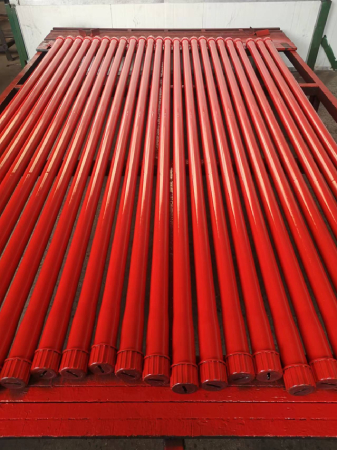- Afrikaans
- Albanian
- Amharic
- Arabic
- Armenian
- Azerbaijani
- Basque
- Belarusian
- Bengali
- Bosnian
- Bulgarian
- Catalan
- Cebuano
- Corsican
- Croatian
- Czech
- Danish
- Dutch
- English
- Esperanto
- Estonian
- Finnish
- French
- Frisian
- Galician
- Georgian
- German
- Greek
- Gujarati
- Haitian Creole
- hausa
- hawaiian
- Hebrew
- Hindi
- Miao
- Hungarian
- Icelandic
- igbo
- Indonesian
- irish
- Italian
- Japanese
- Javanese
- Kannada
- kazakh
- Khmer
- Rwandese
- Korean
- Kurdish
- Kyrgyz
- Lao
- Latin
- Latvian
- Lithuanian
- Luxembourgish
- Macedonian
- Malgashi
- Malay
- Malayalam
- Maltese
- Maori
- Marathi
- Mongolian
- Myanmar
- Nepali
- Norwegian
- Norwegian
- Occitan
- Pashto
- Persian
- Polish
- Portuguese
- Punjabi
- Romanian
- Russian
- Samoan
- Scottish Gaelic
- Serbian
- Sesotho
- Shona
- Sindhi
- Sinhala
- Slovak
- Slovenian
- Somali
- Spanish
- Sundanese
- Swahili
- Swedish
- Tagalog
- Tajik
- Tamil
- Tatar
- Telugu
- Thai
- Turkish
- Turkmen
- Ukrainian
- Urdu
- Uighur
- Uzbek
- Vietnamese
- Welsh
- Bantu
- Yiddish
- Yoruba
- Zulu
stainless steel threaded coupling
Understanding Stainless Steel Threaded Couplings
In the realm of industrial applications and construction, threaded couplings play a vital role in connecting two pipes or fittings. Among the various materials available for these components, stainless steel stands out due to its remarkable properties, making it the material of choice for a multitude of applications. In this article, we will explore the characteristics, advantages, and typical uses of stainless steel threaded couplings.
What is a Threaded Coupling?
A threaded coupling is a cylindrical piece that connects two male pipes, allowing for fluid transfer or structural reinforcement. These components are essential in plumbing, heating, and mechanical systems, where reliability and strength are paramount. The threads on the inner circumference of the coupling make it easy to screw onto corresponding male threads on pipes, creating a tight seal that prevents leaks.
Stainless Steel A Superior Choice
Stainless steel is an alloy primarily composed of iron, chromium, and sometimes nickel, which imparts excellent resistance to corrosion and oxidation. This makes stainless steel threaded couplings ideal for environments where exposure to moisture, chemicals, or extreme temperatures is prevalent. The low maintenance requirements and durability of stainless steel further enhance its appeal in various industries, including food processing, pharmaceuticals, and petrochemicals.
Advantages of Stainless Steel Threaded Couplings
1. Corrosion Resistance One of the most significant advantages of stainless steel is its exceptional resistance to rust and corrosion. This durability ensures a longer lifespan for the threaded couplings, reducing the need for frequent replacements and maintenance.
stainless steel threaded coupling

2. High Strength Stainless steel threaded couplings offer high tensile strength, making them suitable for high-pressure applications. This strength ensures that the connections remain secure and functional even under extreme conditions.
3. Temperature Tolerance Stainless steel can withstand a wide range of temperatures, from cryogenic to high-heat environments, making it versatile for various applications.
4. Hygienic Properties In industries such as food and pharmaceutical manufacturing, sanitary conditions are crucial. Stainless steel is non-porous and easy to clean, ensuring that contaminants do not accumulate, thus maintaining hygiene.
5. Aesthetic Appeal Stainless steel has a sleek, modern appearance that is often favored in architectural applications. Its resistance to tarnish and easy maintenance keep it looking polished over time.
Common Applications
Stainless steel threaded couplings are widely used in numerous applications - Plumbing They connect pipes in residential and commercial water systems, ensuring water is transported efficiently and safely. - HVAC Systems In heating, ventilation, and air conditioning systems, these couplings help maintain the integrity of air ducts and piping. - Oil and Gas Industries High-strength stainless steel couplings are essential in these sectors, as they can handle the demands of high-pressure and corrosive environments. - Food and Beverage Processing The hygienic properties of stainless steel make it ideal for use in food systems, where sanitation is critical.
Conclusion
In summary, stainless steel threaded couplings are essential components that provide strength, durability, and reliability in various applications. Their resistance to corrosion and ability to withstand extreme conditions make them a superior choice over other materials. As industries continue to advance and evolve, the demand for high-quality, reliable connections will undoubtedly grow, further establishing the importance of stainless steel threaded couplings in modern infrastructure and industrial processes. Whether in plumbing, HVAC, or any other field requiring dependable connections, stainless steel threaded couplings set the standard for performance and longevity.
-
Tubing Pup Joints: Essential Components for Oil and Gas OperationsNewsJul.10,2025
-
Pup Joints: Essential Components for Reliable Drilling OperationsNewsJul.10,2025
-
Pipe Couplings: Connecting Your World EfficientlyNewsJul.10,2025
-
Mastering Oilfield Operations with Quality Tubing and CasingNewsJul.10,2025
-
High-Quality Casing Couplings for Every NeedNewsJul.10,2025
-
Boost Your Drilling Efficiency with Premium Crossover Tools & Seating NipplesNewsJul.10,2025







